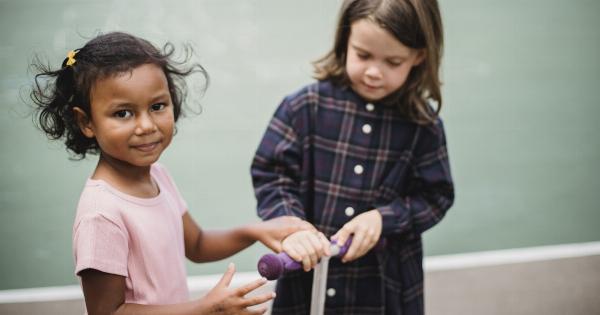Having friends is an important aspect of a child’s social development. However, not all friendships are positive influences.
It is common for children to make friends with peers who may have a negative impact on their behavior, attitudes, and values. As a parent, it is crucial to recognize when your child’s friend is a negative influence and take appropriate action to address the situation.
Signs of a Negative Influence
Identifying whether your child’s friend is a negative influence can be challenging, especially if your child is secretive or dismissive about their behavior.
However, there are certain telltale signs that can help you determine if your child’s friendship is detrimental:.
1. Poor Academic Performance
If you notice a sudden decline in your child’s academic performance, it could be due to the influence of their friend.
Negative influences can distract your child from their studies or encourage them to engage in activities that hinder their learning.
2. Changes in Attitude and Behavior
Pay attention to any significant attitude or behavior changes in your child. If they start exhibiting disrespectful or rebellious behavior that was not characteristic of them before, their friend might be influencing them negatively.
3. Involvement in Risky Behavior
If your child’s friend is involved in risky behavior such as substance abuse, delinquency, or bullying, it is highly likely that your child may be influenced to engage in the same activities. Keep an eye out for any signs of harmful behavior.
4. Lack of Positive Influence
If your child’s friend does not display any positive qualities or does not contribute to your child’s growth and well-being, they are potentially a negative influence.
A true friendship should be built on mutual support, respect, and encouragement.
5. Peer Pressure
One of the most prevalent signs of a negative influence is peer pressure. If your child is constantly pressured by their friend to engage in activities against their judgment or values, it is a clear indication of a detrimental friendship.
Dealing with a Negative Influence
Once you have determined that your child’s friend is a negative influence, it is important to address the situation promptly. Here are some strategies you can employ:.
1. Open Communication
Initiate an open and non-judgmental conversation with your child about their friendship. Allow them to express their feelings and concerns, and ensure they understand that you are there to support them.
2. Educate Your Child
Teach your child about the potential consequences of negative influences. Help them understand how they can distinguish between positive and negative friendships, and the importance of surrounding themselves with friends who inspire and uplift them.
3. Encourage New Friendships
Suggest opportunities for your child to make new friends who share their interests and values. Encourage their participation in extracurricular activities where they can meet like-minded peers and develop positive relationships.
4. Monitor and Limit Interactions
While it may not always be possible to completely sever the friendship, you can monitor and limit your child’s interactions with their negative influence, especially outside school settings.
Set boundaries and establish rules regarding when and where they can spend time together.
5. Involve School Authorities
If the negative influence is persistently affecting your child’s well-being, academic performance, or safety, consider involving school authorities.
Inform teachers or school counselors about the situation so they can provide additional support and intervene if necessary.
Conclusion
Recognizing and addressing a negative influence in your child’s life is crucial for their overall well-being and development.
By actively engaging in open communication and providing guidance, you can help your child navigate their friendships and cultivate healthier relationships moving forward.






























